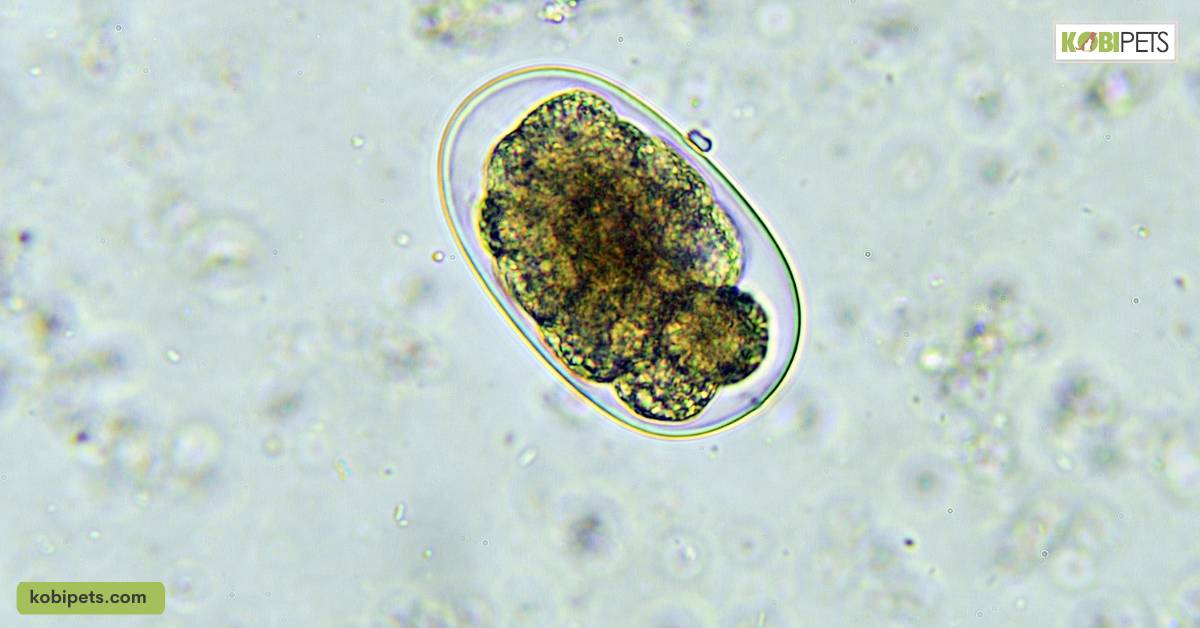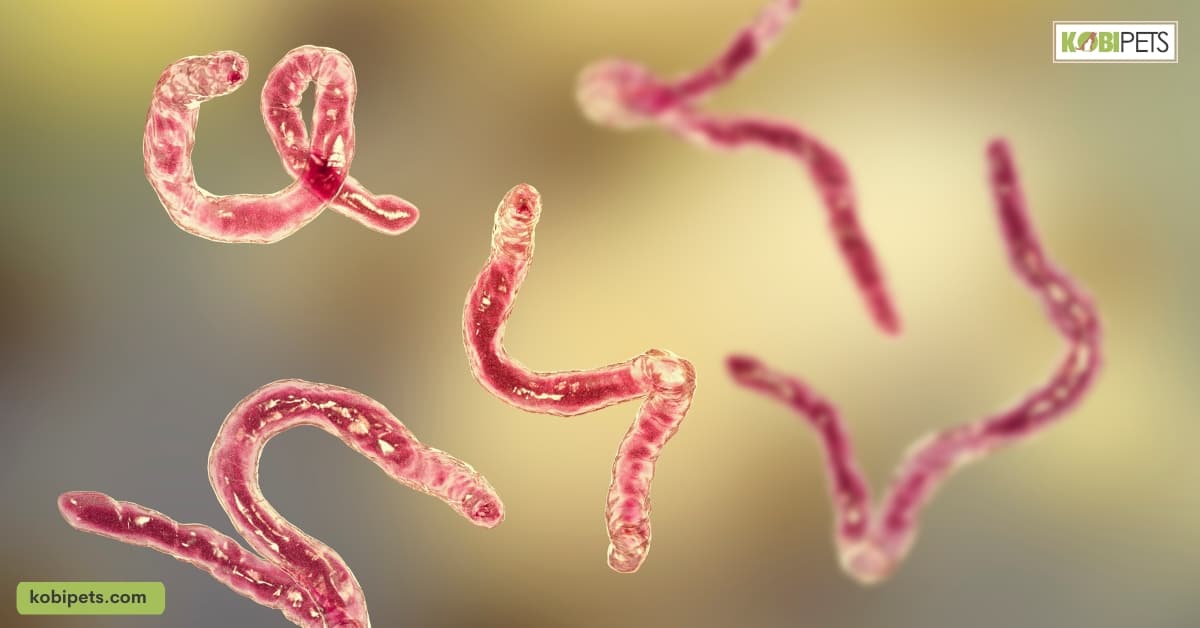Hookworms are a common health concern for our four-legged friends. They’re tiny, parasitic organisms that can cause a series of discomforting symptoms in dogs, and in some cases, might be present without displaying any noticeable signs.
Hookworms in dogs are tiny, harmful parasites that can cause stomach upset, weight loss, and anemia. They may inhabit a dog’s intestines, often without obvious signs, making regular check-ups and preventative measures essential for your furry friend’s health and well-being.
What Are Hookworms?
Hookworms, scientifically known as Ancylostoma caninum, are tiny parasites that invade the small intestine of dogs. Their size belies their danger; despite being minuscule, these critters pack a punch as they attach to the intestinal wall and feed on the dog’s blood.
The repercussions of a severe infestation can be life-threatening, particularly due to significant blood loss. In Australia, they’re quite a common threat to canines.
Hence, understanding these parasites is the first step towards safeguarding your dog’s health.
How Do Dogs Get Infected With Hookworms?
Dogs can become infested with hookworms in several ways, primarily through ingestion or skin penetration. They typically contract the larvae from a contaminated environment, such as soil or feces, where the hardy larvae can live for several months.
Here are the common methods of hookworm transmission:
- Ingestion of Larvae: Dogs may accidentally swallow hookworm larvae when they lick or sniff contaminated soil or feces. For instance, while playing outside or exploring new areas, they might ingest these microscopic parasites. This is the most common mode of transmission in adult dogs.
- Skin Penetration: In certain cases, hookworm larvae can penetrate the dog’s skin, particularly through their paws. This occurs when dogs walk or lay on contaminated surfaces. The larvae then migrate through the dog’s body to the intestine to develop into adult hookworms.
- Larvae Transmission During Nursing: Puppies can also contract hookworms from their mother’s milk. This is the most common method of transmission in puppies. If the mother dog is infected with hookworm, she can pass the infection on to her puppies during nursing.
Understanding these transmission pathways can help in devising effective preventive strategies against hookworm infestation.
Hookworm Life Cycle In Dogs
Now that we’ve identified how dogs can contract hookworms, let’s take a closer look at the life cycle of these pesky parasites. Understanding this cycle is essential as it sheds light on the persistence of these worms and guides us in implementing effective treatment strategies.
So, how does a tiny larva grow into an adult hookworm causing havoc in your dog’s intestines? Let’s unravel this parasitic journey step by step.
Initial Infestation
The hookworm life cycle kicks off when adult hookworms living in the small intestine of a dog begin to reproduce. Male and female hookworms mate and the females start to produce eggs.
These eggs are then passed into the environment through the dog’s feces, marking the beginning of a new cycle of infestation.
Development of Larvae
Once in the environment, the eggs hatch to release hookworm larvae. These larvae embed themselves in the surrounding environment, such as soil, and begin to develop.
Depending on the temperature conditions, in as short a span as 2 days, these larvae can mature and become capable of infesting another dog.
Transmission to New Host
The mature hookworm larvae now wait for a new host. They can infest a new dog either by being ingested or by penetrating the dog’s skin. For instance, a dog might ingest the larvae while sniffing or licking contaminated soil or feces.
Alternatively, the hookworm larvae might penetrate the dog’s skin when it walks or lays on a contaminated surface.
Completion of Life Cycle
Once inside a new host, the larvae continue their journey. They migrate through the dog’s body, ultimately ending up in the small intestine. Here, they mature into adult hookworms, and the cycle begins anew.
Hookworm In Puppies
Sadly, puppies are especially vulnerable to hookworm infestation due to transmission through their mother’s milk. This can lead to serious health issues, as the parasites feed on the pup’s blood, causing anemia and potentially, severe malnutrition.
Early intervention is key, so it’s vital to ensure regular vet check-ups and deworming protocol for both mother and pups. Symptoms in puppies could include pale gums, weight loss, and a pot-bellied appearance.
Stay vigilant for these signs and seek immediate veterinary attention if suspected.
Hookworm Symptoms In Dogs
The symptoms of hookworms in dogs can vary, from subtle signs to more noticeable issues. In some cases, dogs may not exhibit any symptoms, especially if the infestation is minor. However, in severe infestations, the symptoms can be quite serious and if left untreated, life-threatening.
Let’s take a look at some of the common symptoms:

Hookworm Symptoms In Dogs
- Bloody Diarrhea: One of the most common symptoms of hookworms in dogs is bloody diarrhea. This is due to the damage the parasites cause to the intestines as they feed on the dog’s blood.
- Pale Gums: Pale gums are a sign of anemia, which can occur in dogs with severe hookworm infestation. This is because the hookworms consume a significant amount of blood, leading to a decrease in red blood cells.
- Weakness: Dogs with a hookworm infestation may appear weak and lethargic. This is a result of the blood loss and nutrient deficiencies caused by the hookworms.
- Weight Loss: Hookworms can interfere with the absorption of nutrients in the intestines, leading to weight loss. Dogs infected with hookworms may lose their appetite and consequently, lose weight.
- Dull Coat: A dull, lifeless coat can also be a sign of a hookworm infestation. This is due to the lack of nutrients caused by the parasites.
Remember, it’s always best to consult with your vet if your dog shows signs of illness. Early detection and treatment can prevent serious complications.
How Are Hookworm Diagnosed?
Diagnosing hookworms in dogs involves a fecal examination performed by your veterinarian. The process, often referred to as a fecal flotation test, entails examining a sample of the dog’s stool under a microscope to look for hookworm eggs.
Since hookworm eggs are microscopic, they are not visible to the naked eye, making a microscopic examination necessary. However, it’s important to note that younger hookworms might not produce eggs immediately.
Therefore, if your vet suspects an infestation but doesn’t find eggs, they may recommend retesting or starting treatment regardless.
Hookworm Treatment
Treating hookworms in dogs is a straightforward process using deworming medications like Fenbendazole, Pyrantel, Moxidectin, or Milbemycin. These medications are designed to kill the hookworms in your dog’s system.
After the initial treatment, vets generally recommend a follow-up dose a few weeks later to ensure all the parasites and their larvae are eliminated. These treatments are cost-effective, making it easy for dog owners to manage hookworm infestations.
Having a conversation with your vet about the best hookworm treatment for your pet is always a good idea, ensuring your furry friend is back to their energetic self in no time.
In conclusion
Hookworms are a common yet preventable threat to our canine companions. With awareness and proactive measures, we can keep these pesky parasites at bay and ensure our pets live healthy, happy lives.
Remember, early detection and treatment are crucial in handling a hookworm infestation. Regular vet check-ups, fecal examinations, and a good deworming protocol can go a long way in safeguarding your dog’s health.
With effective treatments like Fenbendazole, Pyrantel, Moxidectin, or Milbemycin readily available, managing hookworms is easier than ever before.















